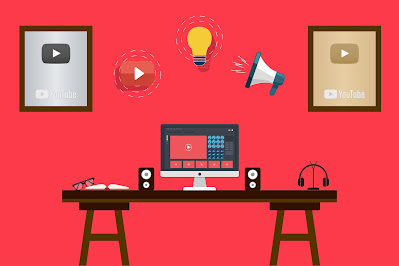In this article you are going to read What is video editing after reading this article you may become professional because i explain every thing about video editing first you read about the basics of video editing for beginners and then when you read continuously you will become beginner video editor to professional video editor by following these tips.

What is video editing || basics of video editing for beginners.
Video enhancing is a critical thing of the film making and video manufacturing process. It allows creators to tell a story and convey emotions through the manipulation of visual and audio elements. With the advancement of technology, video editing has become more accessible to the public, allowing anyone to create and share their own videos.
THESE TOPICS COMING UP.
1) Color correction and color grading.
2) Audio mixing and editing.
3) Motion graphics and visual effects.
4) Non-linear editing and workflow.
5) Time-remapping and speed manipulation.
6) Chroma keying and green screen techniques.
7) 3D compositing and visual effects.
8) Multi-cam editing and syncing.
9) Virtual reality and 360 video editing.
10) exporting and rendering techniques.
One of the most important techniques in video editing is Color Correction and Color Grading.
Color correction is the process of adjusting the technical aspects of the color in a video, such as white balance and exposure. Color grading, on the other hand, is the process of stylizing the color to create a specific look or mood for the video. This can be done by adjusting the color temperature, saturation, and contrast.
Color grading can be used to create a warm or cool tone, or to enhance the mood of a scene. Audio mixing and editing is also a key aspect of video editing.
This technique includes adjusting the audio degrees and including results to a video.
Audio mixing involves adjusting the volume, panning, and equalization of the audio tracks. Audio editing can include removing unwanted noise, adding background music, or creating sound effects. A good audio mix can greatly enhance the overall viewing experience and help convey the emotions of a scene.
Motion snap shots and visible results are used to create visible factors that do not exist with inside the actual world. This can include animations, 3D models, and special effects.
Motion graphics can be used to create titles, transitions, and other visual elements that can help to tell a story.
Visual effects can be used to create a sense of realism, or to create fantastical worlds.
Non-linear editing and workflow is a modern approach to editing videos. In this process, an editor can jump around to different parts of the video and make changes without affecting the rest of the footage. This is done using a non-linear editing software, such as Adobe Premiere, Final Cut Pro, or Avid Media Composer.
Non-linear editing allows for more flexibility and creativity in the editing process.
Time-remapping and speed manipulation are powerful techniques used to change the speed of a video.
Time-remapping is used to change the overall speed of a video, while speed manipulation is used to change the speed of specific parts of a video. This can be used to create a sense of urgency, or to slow down a fast-paced action scene.
Chroma keying and green screen techniques are widely used in video production.
Chroma keying is the manner of getting rid of a selected colour from a video and changing it with another. This is commonly used for special effects, such as placing a person in a different location.
Green screen techniques are used to isolate a specific color (usually green) in a video and replace it with a different background.
3D compositing and visual effects are used to combine 2D and 3D elements in a video. This can include adding 3D models and animations to a 2D video, or creating a 3D environment for a live-action video. 3D compositing can be used to create realistic environments, or to create surreal and fantastical worlds.
Multi-cam editing and syncing are important techniques used to edit footage from multiple cameras. This can include syncing the audio and video from different cameras, and cutting between them to create a cohesive final product.
Multi-cam editing allows for more creative control over the final product, and can help to create dynamic and engaging videos.
Virtual reality and 360 video editing are the future of video production. These techniques allow for the creation of immersive experiences for viewers.
Virtual reality and 360-degree videos can be edited using specialized software such as Nuke, Fusion, or After Effects. These types of videos are great for exploring new places, or for creating interactive experiences that allow viewers to look around and explore a scene. Another crucial thing of video modifying is using transitions.
Transitions are used to smooth out the transition between different shots or scenes. This can include simple cross-fades, wipes, or more complex animations. Transitions can be used to create a sense of continuity, or to create a jarring effect to convey a change in mood or tone. Overall, video editing is a complex and multi-faceted process that requires a combination of technical skill and creativity. With the advancement of technology, editing has become more accessible to the public, but it still requires a deep understanding of the various techniques and tools available. It's important to have a well-defined workflow, and to be able to adapt to the specific needs of each project.






0 Comments